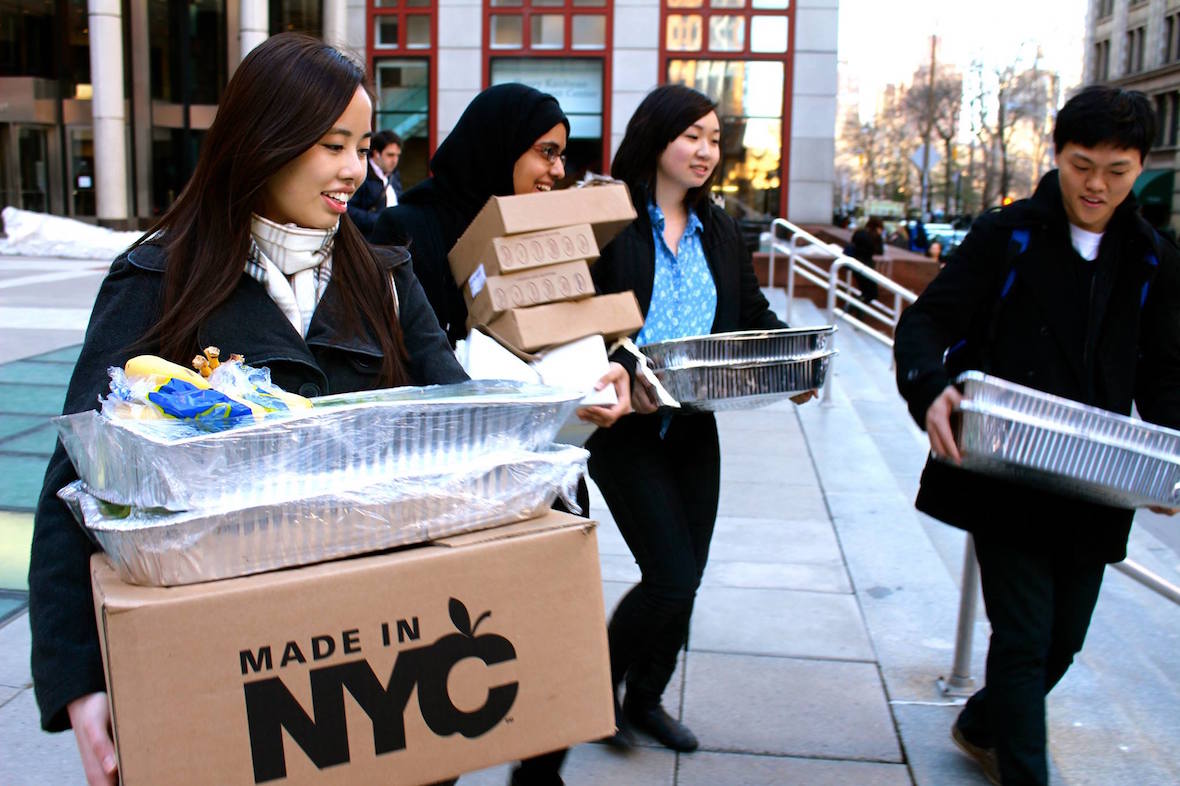An almost unavoidable pitfall of throwing an event is wasting food. You know what I’m talking about if you’ve ever played host.
Our own event director Michaela Johnson has plenty of firsthand experience. She plans multiple tasting events a year for Edible and admits that, despite vendors’ best efforts, there’s always “a fair amount of delicious, perfectly good leftover food that ends up going back with the chefs.” Many of them agree that the ideal solution would be for these servings to instead go to folks in need.
Food is in fact regularly squandered all along the supply chain. According to the USDA, 40 percent of all of the country’s food ultimately goes to waste and this includes food at restaurants and events that, by most organizations’ standards, could be collected and given to someone in need. What’s more, addressing hunger is a particularly acute issue in our own city as one in every five New Yorkers struggles to feed him- or herself according to the Food Bank of New York City.
Redistributing perfectly good leftovers is not a novel idea, but the problem for most event organizers and restaurants is that many food rescuing organizations have minimum pound requirements, which makes it hard to donate smaller quantities. Enter Rescuing Leftover Cuisine (RLC). The all-volunteer-run nonprofit accepts any amount of food and, with a simple user-friendly calendar on its website, connects and mobilizes volunteers who are willing to pick up and drop off donations.
“We believe that any small amount of food goes a long way,” Robert Lee, CEO and co-founder of RLC says. “As long as volunteers are willing and able, we believe they can make a real impact in the communities around them. … We work with all types of food pantries, soup kitchens and homeless shelters, so we arrange food donations to go where they are needed at the closest location so that everything stays local.”
The idea for RLC was born in 2009, when Lee and some fellow New York University students saw an opportunity for preventing food waste in the school’s dining halls. They arranged to pick up leftovers and donate them to local shelters, and upon graduation, Lee and his two co-founders, Louisa Chen and Paul Lee, expanded the concept to restaurants and formally established RLC in 2013.
Now every day from 10:00 a.m. to 10:30 p.m., volunteers who sign up on the RLC website can pick up a variety of foods that meet the nonprofit’s only two requirements: It must be unexpired and never have been plated. After volunteers select a time and place, an RLC “lead rescuer” (a volunteer who goes through training) organizes the pickup and provides volunteers with all necessary packing materials. Then, after volunteers collect the donation, they drop it off at a nearby food pantry, shelter or soup kitchen that has both an existing relationship with RLC as well as the ability to store the donation. The whole process, from pickup to drop-off, normally takes 30 minutes and can usually be done on foot.
In the past three years, RLC has reclaimed more than 600,000 pounds of food (or an estimated half a million meals based on the USDA estimate of 1.2 pounds of food equaling one meal) and set up partnerships with about 100 businesses, including Dig Inn, Starbucks and Katz’s Deli. The nonprofit has also recently begun reaching out to organizations and businesses to accept donations from events hosted throughout the city, including our own—hence the connection with Johnson. With networks now in 12 cities nationwide—from Poughkeepsie to L.A.—RLC is also looking to expand to additional locations in 2017. By working with past volunteers to set up new chapters wherever they can, RLC hopes to continue to prove that, no matter the quantity, every little bit of food matters.
Anyone can volunteer with RLC, who asks that a parent or guardian accompany kids under 15. Learn more on RLC’s website.
Photo credit: Facebook/Rescuing Leftover Cuisine



